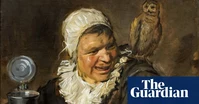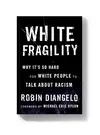Susan Smit, Bregje Hofstede and Manja Bedner, the chair and board members of the National Witches Monument foundation, have raised €35,000 (£29,000) for an official site of memory for about 70,000 people who died during a Satanic panic that swept Europe and the Americas.
"It's about creating more awareness around this history of, basically, femicide," Hofstede said. "To this day a witch is still a comic figure. In the Netherlands, every year at the carnaval, people burn effigies of witches … but there's hardly any knowledge of the actual history of people being burned at the stake."
The foundation is asking for public feedback on three municipalities that want to host the national monument. In Roermond, at least 75 people, mostly women, were burned alive during the most significant witch trials in 1613 and 1614. In the area of Montferland, Mechteld ten Ham was burned alive in 1605, although she had asked for a court trial. The last candidate is Oudewater, which had an official witches' weigh house and royal dispensation to issue certificates of innocence if someone's weight matched their body mass (meaning they were too heavy to fly on a broom).
The historian Steije Hofhuis, who is publishing a book on the European witch-hunts, said it was a time when the masses really believed that others – generally "weak" women – were consorting with the devil and causing chaos.
They were then and they still are now. 
"People were genuinely panicking about the witch," he said. "It was widely thought that the end of time was nigh … and horrific witches were very dangerous. You could say it was a big conspiracy theory that the devil was cooperating with people to ruin Christian communities, and the way it spread was like a cultural virus."
It is skated over in the Dutch historical "canon" of 50 events taught to all children. It is one of the "shadowy" areas that some politicians want to teach explicitly, and a revelation to schoolchildren who visit Museum de Heksenwaag in Oudewater.
Although historians such as Hofhuis say witch-hunts were not an explicit conspiracy by church or government, campaigners believe a monument would carry a strong political message. The rightwing MP Geert Wilders called the former first deputy prime minister Sigrid Kaag a "heks" (witch) in widely shared tweets and comments. She was ambushed by protesters with burning torches and later said "hate, intimidation and threats" had chased her from Dutch politics.
For Hofstede, more awareness of the people, mostly women, who were put to death as witches is not just about restoring past honour. "Culturally, ideas haven't changed that quickly in just a few centuries and we're still dealing with some of the thinking that went on back then, right now," she said.
"This cultural unease with powerful women is for me the big theme linking these historical witch-hunts and the way we treat women today … And the witch can be a figure of warning."
"There was no Church conspiracy to oppress women, but we're going to create monuments to satanic imagery, and we'd like to teach your kids about how you and all of your ancestors were evil."




 Dutch feminists campaign for national monument to 'witches'
Dutch feminists campaign for national monument to 'witches' 


Jump in the discussion.
No email address required.
It's illegal to sell fake drugs just like it should be illegal to sell fake witchcraft to people wanting to kill their neighbors' cattle.
Jump in the discussion.
No email address required.
More options
Context
Snapshots:
https://www.theguardian.com/world/2024/oct/04/dutch-feminists-campaign-for-national-monument-to-witches:
ghostarchive.org
archive.org
archive.ph (click to archive)
Jump in the discussion.
No email address required.
More options
Context